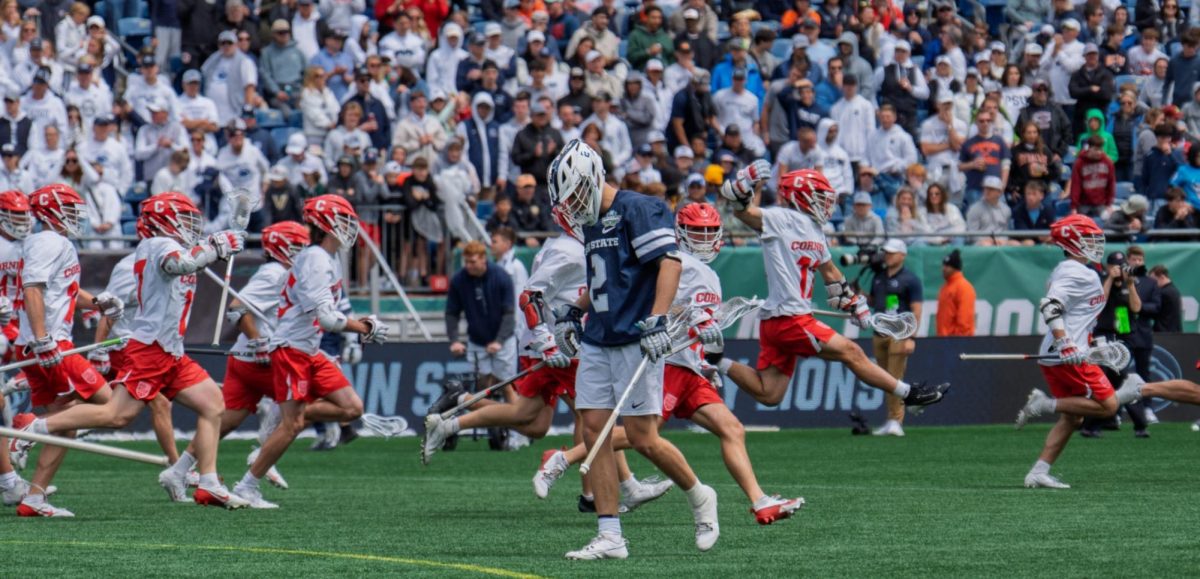In the bottom of the ninth inning, bases loaded in a 5-5 game, in walks the ace closer. First pitch, he throws a 98-mile-per-hour four-seam fastball. Fans cheer, but the pitcher pales in nervousness. On the next pitch, a wild throw above the batter brings the runner home, losing the game.
Fans leave the stadium in shock, too flabbergasted to even boo, and the next morning, sports headlines criticize the pitcher’s command.
“I started to overanalyze everything about my throw and my arm action got very pushy,” said Joey Laurer. “At one point in the summer of 2021, I couldn’t play catch at all.”
Laurer, a former Division 1 pitcher for Siena College, was a victim of the yips – a psychological movement disorder that causes involuntary muscle contractions, crippling even the most talented athlete.

Since then, Laurer has shared his journey on social media to encourage others experiencing the yips. His Instagram handle is @60eraguy, a nod to his ERA for the 2022 season.
With the yips, symptoms such as tremors, twitching, and a sudden sense of fear induce chain reactions of anxiety, which “freeze” the victim’s brain. It targets a variety of athletes in baseball, golf, football, cricket, and darts, and it even affects non-athletes, like musicians.
Despite clear symptoms, some perceive the yips as a myth.

“I lost a lot of command very quickly, and then everyone around me told me I was overthinking,” Laurer explained in a conversation over Instagram. “That led to the yips.”
Contrary to common belief, however, the yips “involves the combination of both physical and psychological problems.”
Scientifically, the yips are a close cousin of a neurological condition called “focal dystonia,” which specifically affects one body part. Both afflictions share the same symptoms, which happen idiopathically and unpredictably; however, the yips, unlike its close relative, have both physical and psychological causes, such as focal dystonia, social anxiety, and perfectionism, among many others.
“I first got the yips after I got hurt with thoracic outlet syndrome,” Laurer said. “I didn’t know I was physically hurt. I just knew something didn’t feel right when I would grab the baseball.”
TOS, according to the Mayo Clinic, demonstrates a condition that pressures nerves or veins between the neck and shoulder area, which may have triggered the yips. However, his overwhelming fear of failure likely accelerated the progress of the disorder. Such erratic psychological responses alerts the brain to jump to conclusions that possibilities are impossible.
However, when treated the right way, the yips will not break an athlete’s career.
“What it took for me to overcome the yips was daily training of my mind, body, and spirit,” Laurer said. “I have a strong faith and feel that it is the biggest piece to the puzzle in helping me come out … It took away all the self-inflicted pressure and made me feel calm again on the field.”
Since 2021 until now, he continuously progressed in his bullpen sessions.
While long-term solutions, according to a 2024 article by the Mayo Clinic, such as physiotherapy, psychological treatments, and adjustments in movement help ease the condition, what rectifies the yips is the individual’s confidence. The right mind-set can fix the yips within a day, so athletes should refrain from doom scrolling through vicious comments on social media.
“My biggest words of encouragement for those struggling with the yips is to look at it as a daily challenge that you need to overcome, not a big daunting task,” Laurer added. “Channel all of your energy into conquering it on that specific day and continue to stack days . . . day after day, [it starts] to suppress themselves and your default abilities become natural again over time.”
–Aug. 15, 2024–







